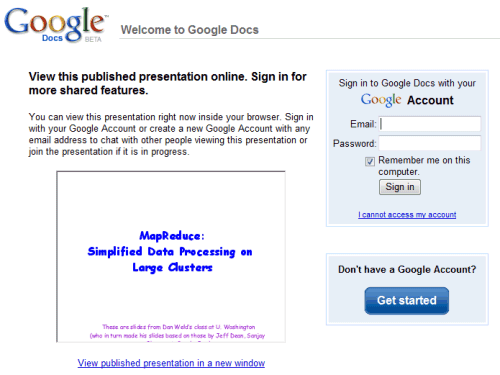Google's favicon is hosted at google.com/favicon.ico and it's a 16x16 pixels image, a standard size for favicons. Google replaced the upper-case "G" in blue border, green and red borders with a lower-case purple "g" in a rounded corner rectangle.
The first time when I saw the new favicon at Google Image Search, I thought there was something wrong with my browser's cache or I typed an incorrect address. Google's new favicon is less cheerful and comforting, but it makes a lot of sense: the small g is a symbol for infinity (∞). A googol (10100) is just a poor approximation for the huge amount of information that needs to be indexed, organized and made useful by Google.
{ Thanks for the tip, Louis, John and Aleksandr. }
Update: If you want the old favicon back, try this Greasemonkey script (requires Greasemonkey for Firefox, Opera or a userscript plug-in for other browsers).
Update 2: Search Engine Land has an official position from Google. "We recognized there was a need for a Google icon that would better work across multiple applications including web, mobile and client applications. We felt the small 'g' had many of the characteristics that best represent our brand: it's simple, playful, and unique. We will be looking to improve and enhance this icon as we move forward."
Update 3: Google says this is not the final favicon. "We tried in total more than 300 permutations [some of them are displayed below]. It was much harder than we thought at first. We wanted something distinctive and noticeable, so we aimed toward transparency or semi-transparency, so the image would have a more distinctive noticeable shape than just a block. We wanted something that embraced the colorfulness of the logo, yet wouldn't date itself." If you have some suggestions for Google's favicon, send them here.
Update: The favicon was updated in January 2009.
 Google pre-announced a mysterious new feature for Gmail. "On Thursday, June 5th we're going to be launching a new Gmail feature that we like to think of as a next evolution of 20% time. It's a change in our development process and in the way users will be able to influence Gmail's design."
Google pre-announced a mysterious new feature for Gmail. "On Thursday, June 5th we're going to be launching a new Gmail feature that we like to think of as a next evolution of 20% time. It's a change in our development process and in the way users will be able to influence Gmail's design."













































